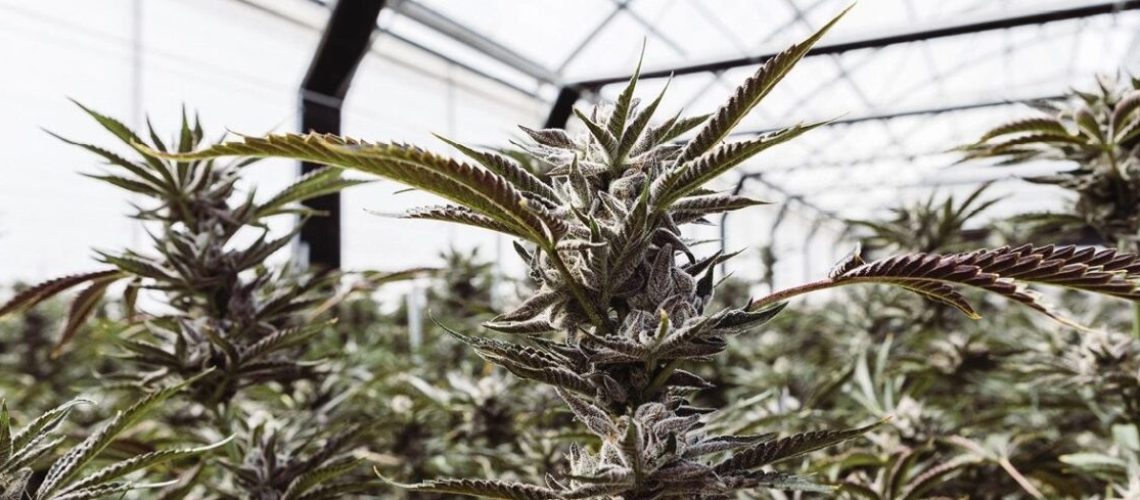ESA Solar this week announced completion of a first 1.2 MW phase of a 3.6 MW ground-mounted solar project for a cannabis grower utilizing indoor growing facilities. Cannabis production represents more than 1% U.S. electricity demand, presenting a big opportunity for renewable energy adoption.
In Central Florida, ESA Solar this week announced completion of a first 1.2 MW phase of a 3.6 MW ground-mounted solar project for a cannabis grower utilizing indoor growing facilities. The three-phase solar farm project is part of ESA’s ongoing expansion efforts to provide pathways to decarbonization for companies and communities in new markets and regions, including recreational cannabis.
The solar farm uses Q Cells Q-Peak Duo XL bifacial double glass solar modules mounted to Terrasmart Glide racking hardware, a design built to provide maximum efficiency and stability, an ESA Solar spokesman told pv magazine USA. The array’s panels are strung together using 62.5 kW Sunny TriPower Core 1 inverters from SMA Solar, he added.
A 2022 report from the United Nations’ Office of Drugs and Crime (UNODC) estimated climate control measures represent more than 80% of the carbon footprint of indoor cannabis production. On-site solar systems can reduce costs for growing operations, as electricity can add up to 30% to 50% of the cost of cannabis production.
Cannabis production represents over 1% of U.S. electricity demand, said the National Conference of State Legislatures, presenting a large opportunity for renewable energy adoption.
According to the State of the Cannabis Cultivation Industry report of 2021, 54% of growers solely operate indoor facilities, while upwards of 80% operating an indoor facility in addition to a greenhouse or outdoor facility. Related to energy consumption, 150 kWh is used annually per square foot in an indoor grow facility. This equates to less than 750,000 kWh of annual energy use for small facilities and over 5 million kWh for large growers.
Various recreational cannabis market growers have turned to on-site solar and energy storage systems to offset their energy consumption in addition to using energy efficient LED lighting systems designed to operate at daily intervals when power is less expensive on the grid. Such practices have in turn saved an additional 50% or more on energy consumption.
ESA’s three-phased solar farm will be used to support all the electricity needs on-site for the Floridian greenhouse cannabis grower. The solar farm project will help cut electricity costs, reduce greenhouse gas emissions, create a more reliable source of electricity, and promote clean energy across the central Florida region, the developer said.
“We are happy to already be wrapping up phase one of this new solar farm project near our home base of Central Florida,” said Justin Vandenbroeck, executive vice president of ESA Solar. “Working alongside local agricultural leaders to promote sustainable energy practices is how we help them meet their growing energy needs. This project will power a cannabis facility, one of the fastest growing sources of new electricity consumption, rivaling data centers and EVs.”
The second phase of the solar farm is expected to be completed by the end of 2023, opening a path for more on-site solar for cannabis facilities in the coming years, the developer said.
Founded in 2017, ESA is a Maitland, Fla.-based commercial, community and utility scale solar developer which has developed projects in more than 10 states. Collectively its team has developed over 3 GW of projects over their career.
Elsewhere in the U.S., Santa Barbara, California-based Canndescent boasts more than 100,000 square feet of indoor cultivation space and produces close to 17 tons of cannabis per year. In 2019, the grower installed a 282.5 kW solar system at its facility in Desert Hot Springs, Calif. The grower’s solar system offsets 25% to 35% of the company’s electricity consumption, depending on the time of year, senior director of compliance Andrew Mochulsky told pv magazine in April 2023.



